
We talk a lot about local giving at ZipSprout. But we haven’t spent as much time talking about the brands who already “get it” – who are going local, at scale. These are brands whose mission includes local giving. They don’t have a Forbes List, or an annual award, but we’ve run into them again and again, as we work to build a local nonprofit database.
About a year ago, we listed the Top 50 Corporate Sponsors in North Carolina, in a relatively simple blog post. But this post continues to be one of our most-visited pages via organic traffic. People are looking for information on corporate sponsorship. So we decided to release the list at a national level.
THE METHOD BEHIND THE STATS
In the ZipSprout database, we’ve built a list of more than 25,000 nonprofit and local event “thank you” pages. We identify and store the URL to this page for every single organization we find, across the U.S. These “thank you” pages can be on the homepage, but they’re often unique pages.
The organizations we look at are all hyperlocal, in that they serve specific metro areas, cities or neighborhoods, either as a nonprofit working with residents of that area, or as an event located in that area. We do not include national nonprofits in our database, though we do include their local arms. For example, we’ll look at a local Relay for Life event’s sponsor page, but not the sponsors of the national Relay for Life HQ.
Here are a few examples of the type of organizations we focus on:
- Portland’s GoGreen Conference
- AHEAD (Affordable Housing, Education and Development) of New Hampshire
- AmblerFest of Philadelphia
- Activate Good of Raleigh
For the purposes of this research, we took the list of these pages, scraped their outbound links, and looked only at top-level-domains, then counted the frequency of each domain. We removed social networks and hosting sites from the list, as many organizations point to Facebook, Twitter, or WordPress from every single page. There are other ways that sponsors are thanked on websites, such as via non-linked images or mentions, that we did not account for. It’s our experience that there’s no significant difference between organizations who link out to sponsors, and those that don’t, so we believe our cross section is still a pretty accurate representation of the whole.
In addition, while we do work with organizations in every U.S. state, our database leans toward urban and suburban areas, so we may have missed, or underrepresented, companies that sponsor rural nonprofits. We also primarily work with non-religious and non-overtly political organizations (we include environmental organizations, but not Green Party events, for example), so companies who focus their sponsorships on organizations with a strong religious or political bent may also be underrepresented.
THE LIST OF TOP 60 CORPORATE SPONSORS IN THE U.S.
Below is the list of top corporate sponsors, along with the percentage of the 25,000+ organizations in our database that each company sponsored.
 1. Wells Fargo – 2.89%
1. Wells Fargo – 2.89% 2. Marriott – 1.63%
2. Marriott – 1.63%
 3. Dick’s Sporting Goods – 1.39%
3. Dick’s Sporting Goods – 1.39%
 4. Whole Foods Market – 1.3%
4. Whole Foods Market – 1.3%
 5. State Farm – 1.07%
5. State Farm – 1.07%
 6. Pepsi – 0.98%
6. Pepsi – 0.98%
 7. US Bank – 0.97%
7. US Bank – 0.97%
 8. Bank of America – 0.92%
8. Bank of America – 0.92%
 9. Budweiser/Budlight – 0.76%
9. Budweiser/Budlight – 0.76%
 10. Clif Bar – 0.74%
10. Clif Bar – 0.74%
 11. CocaCola – 0.72%
11. CocaCola – 0.72%
 12.* Edward Jones – 0.68%
12.* Edward Jones – 0.68%
 12.* WalMart – 0.68%
12.* WalMart – 0.68%
 14. McDonalds – 0.67%
14. McDonalds – 0.67%
 15. Kind Snacks – 0.66%
15. Kind Snacks – 0.66%
 16. PNC Bank – 0.65%
16. PNC Bank – 0.65%
 17. Starbucks – 0.63%
17. Starbucks – 0.63%
 18.* AT&T – 0.58%
18.* AT&T – 0.58%
 18.* Lagunitas – 0.58%
18.* Lagunitas – 0.58%
 20. IBM – 0.55%
20. IBM – 0.55%
 21.* Chick-fil-A – 0.48%
21.* Chick-fil-A – 0.48%
 21.* Allstate – 0.48%
21.* Allstate – 0.48%
 23.* Union Bank – 0.47%
23.* Union Bank – 0.47%
 23.* TD Bank – 0.47%
23.* TD Bank – 0.47%
 23.* Tito’s Vodka – 0.47%
23.* Tito’s Vodka – 0.47%
 26. Kroger – 0.46%
26. Kroger – 0.46%
 27.* Chevron – 0.42%
27.* Chevron – 0.42%
 27.* Delta – 0.42%
27.* Delta – 0.42%
 27.* Geico – 0.42%
27.* Geico – 0.42%
 27.* Heb Grocery – 0.42%
27.* Heb Grocery – 0.42%
 31.* Les Schwab Tires – 0.41%
31.* Les Schwab Tires – 0.41%
 31.* Trader Joe’s – 0.41%
31.* Trader Joe’s – 0.41%
 31.* Boeing – 0.41%
31.* Boeing – 0.41%
 34. Home Depot – 0.40%
34. Home Depot – 0.40%
 35.* Buffalo Wild Wings – 0.39%
35.* Buffalo Wild Wings – 0.39%
 35.* Gatorade – 0.39%
35.* Gatorade – 0.39%
 37.* Target – 0.38%
37.* Target – 0.38%
 37.* PWC – 0.38%
37.* PWC – 0.38%
 37.* Toyota – 0.38%
37.* Toyota – 0.38%
 40. BB&T – 0.37%
40. BB&T – 0.37%
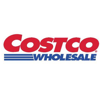 41.* Costco – 0.36%
41.* Costco – 0.36%
 41.* Southwest Airlines – 0.36%
41.* Southwest Airlines – 0.36%
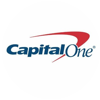 43.* Capital One – 0.34%
43.* Capital One – 0.34%
 43.* Cigna – 0.34%
43.* Cigna – 0.34%
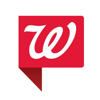 45. Walgreens – 0.33%
45. Walgreens – 0.33%
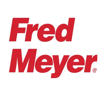 45.* Fred Meyer (owned by #26 Kroger) – 0.33%
45.* Fred Meyer (owned by #26 Kroger) – 0.33%
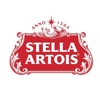 47.* Stella Artois (owned by #9 Budweiser) – 0.32%
47.* Stella Artois (owned by #9 Budweiser) – 0.32%
 47.* Eastern Bank – 0.32%
47.* Eastern Bank – 0.32%
 47.* United Airlines – 0.32%
47.* United Airlines – 0.32%
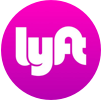 50.* Lyft – 0.31%
50.* Lyft – 0.31%
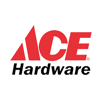 50.* Ace Hardware – 0.31%
50.* Ace Hardware – 0.31%
 50.* Cisco – 0.31%
50.* Cisco – 0.31%
 50.* Publix – 0.31%
50.* Publix – 0.31%
 50.* Realtor.com – .031%
50.* Realtor.com – .031%
 55.* Remax – 0.30%
55.* Remax – 0.30%
 55.* Nike – 0.30%
55.* Nike – 0.30%
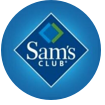 57. Sam’s Club (owned by #13 Walmart) – 0.29%
57. Sam’s Club (owned by #13 Walmart) – 0.29%
 57.* Subway – 0.29%
57.* Subway – 0.29%
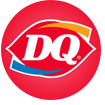 57.* Dairy Queen – 0.29%
57.* Dairy Queen – 0.29%
 60.* Barefoot Wine – 0.28%
60.* Barefoot Wine – 0.28%
*two or more businesses are tied at this rank
Note: This list is an updated version of a list we published in Marketing Land eleven months ago. As we’ve curated more data (our database is more than 2x the size it was then) and as brands have continued to sponsor local organizations, some companies have moved up or down a few spots. For example, Pepsi moved from 2nd to 6th in rank since our last measurement.
WHY LOCAL SPONSORSHIP?
Clif Bar says: community connection
Companies can have different reasons behind local donations, from branding to employee satisfaction. Michelle Ferguson, the EVP of Food & Innovation of Clif Bar (ranked #10), shared how her company came to embrace local giving with a California business school:
“The premise for our marketing is centered around grassroots marketing, or building consumer relationships. Realizing that in every interaction we have a consumer, we have the chance for that person to become an advocate, a friend, a supporter, [reach] someone who is upset with us, as well, and also have a chance for us to learn something.”
The full presentation is about an hour long, but worth watching if local, on-the-ground marketing is of interest.
Whole Foods Market says: mission fulfillment
Other brands see local sponsorship as an opportunity to share their brand’s mission. Christopher Danz, Regional Marketing Manager at Whole Foods Market (ranked #4) Raleigh-Durham told me in an interview last year that the grocery chain’s health and wellness mission is reflected in the events and organization his team chooses to sponsor. Christopher also explained that the processes he’s built out to take in sponsorship requests measures potential organizations’ return on investment, particularly for sponsorships that aren’t as closely aligned with health and fitness.
Wells Fargo says: employee engagement & community investment
Wells Fargo (ranked #1) gives $1000 of donation funds to many of their local branches.
Debbie Ragsdale, the Piedmont East Regional Marketing Director for Wells Fargo told me that “Banks are dependent on the community being successful. We want to see our community grow and thrive…We have a passion about helping our communities. That’s what gets at the local level.”
Wells Fargo has some limitations on the organizations their employees select – it must be a 501c3, it must not be an organization that re-grants out funds, and they must fit into Wells Fargo’s focus areas, which include K-12 education, health & human services, arts & culture, or civic & environmental, Debbie’s colleague, Community Affairs Officer Carrie Gray, told me.
FOR MORE ZIPSPROUT STATS
Be sure to check out our pieces on the costs of local sponsorships, and the size of local organizations.
1 thought on “Top 60 Corporate Sponsors in the United States”